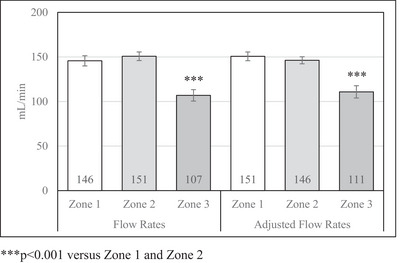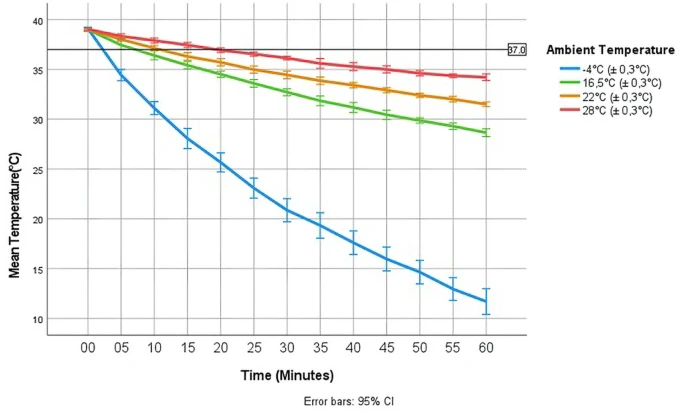12/11/2024
PLyo: Oui mais sans hémodilution par les crstalloïdes
Prehospital Lyophilized Plasma Transfusion for Trauma-Induced Coagulopathy in Patients at Risk for Hemorrhagic Shock. A Randomized Clinical Trial
Jost D. et Al.JAMA Netw Open. 2022;5(7):e2223619.
-----------------
Le recours au plasma fait partie de l'arsenal thérapeutique de la prise en charge des traumatisés sévères en choc hémorragique. Comme l'étude REPHILL (1), Ce travail ne met pas en évidence d'amélioration de la survie à 28 jours. Les délais de transport et le degré d'hémodilution lié au recours aux solutés salés expliquent peut être cela (2)
Key Points
Question Does prehospital transfusion of lyophilized plasma result in a lower incidence of trauma-induced coagulopathy at hospital admission compared with standard care with normal saline infusion in patients at risk for hemorrhagic shock after trauma?
Findings This multicenter randomized clinical trial included 150 patients with trauma who were treated in a prehospital setting. Median international normalized ratio at hospital admission, massive transfusion rate, 30-day survival, and adverse events did not significantly differ between lyophilized plasma transfusion and standard care.
Meaning These findings suggest that prehospital lyophilized plasma transfusion is a feasible and safe procedure for patients who are at risk for hemorrhagic shock, although there is a lack of evidence regarding its ability to prevent trauma-induced coagulopathy.
Abstract
Importance Blood transfusion is a mainstay of therapy for trauma-induced coagulopathy, but the optimal modalities for plasma transfusion in the prehospital setting remain to be defined.
Objective To determine whether lyophilized plasma transfusion can reduce the incidence of trauma-induced coagulopathy compared with standard care consisting of normal saline infusion.
Design, Setting, and Participants This randomized clinical trial was performed at multiple centers in France involving prehospital medical teams. Participants included 150 adults with trauma who were at risk for hemorrhagic shock and associated coagulopathy between April 1, 2016, and September 30, 2019, with a 28-day follow-up. Data were analyzed from November 1, 2019, to July 1, 2020.
Intervention Patients were randomized in a 1:1 ratio to receive either plasma or standard care with normal saline infusion (control).
Main Outcomes and Measures The primary outcome was the international normalized ratio (INR) on arrival at the hospital. Secondary outcomes included the need for massive transfusion and 30-day survival. As a safety outcome, prespecified adverse events included thrombosis, transfusion-related acute lung injury, and transfusion-associated circulatory overload.
Results Among 150 randomized patients, 134 were included in the analysis (median age, 34 [IQR, 26-49] years; 110 men [82.1%]), with 68 in the plasma group and 66 in the control group. Median INR values were 1.21 (IQR, 1.12-1.49) in the plasma group and 1.20 (IQR, 1.10-1.39) in the control group (median difference, −0.01 [IQR, −0.09 to 0.08]; P = .88). The groups did not differ significantly in the need for massive transfusion (7 [10.3%] vs 4 [6.1%]; relative risk, 1.78 [95% CI, 0.42-8.68]; P = .37) or 30-day survival (hazard ratio for death, 1.07 [95% CI, 0.44-2.61]; P = .89). In the full intention-to-treat population (n = 150), the groups did not differ in the rates of any of the prespecified adverse events.
Conclusions and Relevance In this randomized clinical trial including severely injured patients at risk for hemorrhagic shock and associated coagulopathy, prehospital transfusion of lyophilized plasma was not associated with significant differences in INR values vs standard care with normal saline infusion. Nevertheless, these findings show that lyophilized plasma transfusion is a feasible and safe procedure for this patient population.
02/11/2024
Intraosseux: Passer l'os cortical
The relationship between intraosseous catheter tip placement, flow rates, and infusion pressures in a high bone density cadaveric swine (Sus scrofa) model
Gehrz JA et Al. J Am Coll Emerg Physicians Open. 2024 Jul 4;5(4):e13184.
Background: Intraosseous (IO) infusion is a life-preserving technique when intravenous access is unobtainable. Successful IO infusion requires sufficiently high flow rates to preserve life but at low enough pressures to avoid complications. However, IO catheter tips are often misplaced, and the relative flow rates and pressures between IO catheter tips placed in medullary, trabecular, and cortical bone are not well described, which has important implications for clinical practice.
Objectives: We developed the Zone Theory of IO Catheter Tip Placement based on bone density and proximity to the venous central sinus and then tested the influence of catheter tip placement locations on flow rates and pressures in a cadaveric swine model.
Methods: Three cross-trained participants infused 500 mL of crystalloid fluid into cadaveric swine humerus and sternum (N = 210 trials total) using a push‒pull method with a 60 cm3 syringe. Computed tomography scans were scored by radiologists and categorized as zone 1 (medullary space), zone 2 (trabecular bone), or zone 3 (cortical bone) catheter tip placements. Differences between zones in flow rates, mean pressures, and peak pressures were assessed using analysis of variance and analysis of covariance to account for participant and site differences at the p < 0.05 threshold.
Results: Zone 1 and zone 2 placements were essentially identical in flow rates, mean pressures, and peak pressures (each p > 0.05). Zone 1 and zone 2 placements were significantly higher in flow rates and lower in pressures than zone 3 placements (each p < 0.05 or less).

Flow rates by zone
Conclusion: Within the limitations of an unpressurized cadaveric swine model, the present findings suggest that IO catheter tip placements need not be perfect to acquire high flow rates at low pressures, only accurate enough to avoid the dense cortical bone of zone 3. Future research using in vivo animal and human models is needed to better define the clinical impact of IO catheter placement on infusion flow rates and pressures.
| Tags : i
01/11/2024
Réchauffer les perfusions ++++++
Changes in temperature in preheated crystalloids at ambient temperatures relevant to a prehospital setting: an experimental simulation study with the application of prehospital treatment of trauma patients suffering from accidental hypothermia
Jensen E. et Al. BMC Emerg Med 24, 59 (2024)
Background
Accidental hypothermia is common in all trauma patients and contributes to the lethal diamond, increasing both morbidity and mortality. In hypotensive shock, fluid resuscitation is recommended using fluids with a temperature of 37–42°, as fluid temperature can decrease the patient’s body temperature. In Sweden, virtually all prehospital services use preheated fluids. The aim of the present study was to investigate how the temperature of preheated infusion fluids is affected by the ambient temperatures and flow rates relevant for prehospital emergency care.
Methods
In this experimental simulation study, temperature changes in crystalloids preheated to 39 °C were evaluated. The fluid temperature changes were measured both in the infusion bag and at the patient end of the infusion system. Measurements were conducted in conditions relevant to prehospital emergency care, with ambient temperatures varying between − 4 and 28 °C and flow rates of 1000 ml/h and 6000 ml/h, through an uninsulated infusion set at a length of 175 cm.
Results
The flow rate and ambient temperature affected the temperature in the infusion fluid both in the infusion bag and at the patient end of the system.

A lower ambient temperature and lower flow rate were both associated with a greater temperature loss in the infusion fluid.
Conclusion
This study shows that both a high infusion rate and a high ambient temperature are needed if an infusion fluid preheated to 39 °C is to remain above 37 °C when it reaches the patient using a 175-cm-long uninsulated infusion set. It is apparent that the lower the ambient temperature, the higher the flow rate needs to be to limit temperature loss of the fluid.
